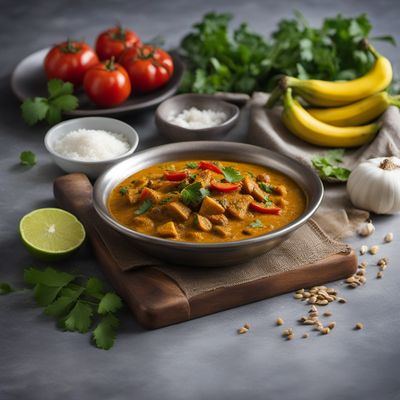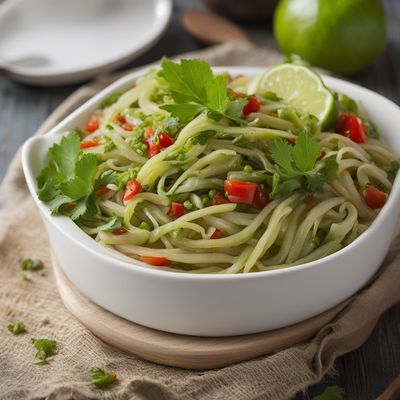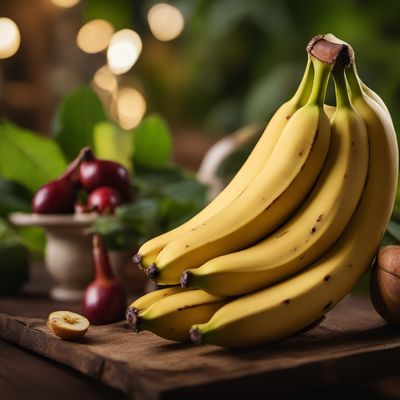
Ingredient
Common banana
The Versatile Wonder: Common Banana
The common banana is a tropical fruit with a soft, creamy flesh and a sweet flavor that ranges from mildly tangy to richly sweet, depending on its ripeness. It has a distinctive elongated shape, with a vibrant yellow peel that turns brown as it ripens. The flesh is tender and smooth, with a slightly fibrous texture when underripe. When fully ripe, it becomes soft and custard-like, making it perfect for mashing or blending into various recipes.
Origins and history
The common banana is believed to have originated in Southeast Asia, specifically in the region that encompasses Malaysia, Indonesia, and the Philippines. It has been cultivated for thousands of years and has become a staple food in many tropical regions around the world. Bananas have cultural significance in various countries and are often associated with tropical landscapes and exotic flavors.
Nutritional information
Common bananas are a good source of dietary fiber, vitamin C, potassium, and vitamin B6. They are also low in calories and fat. Additionally, bananas contain antioxidants and natural sugars, providing a quick energy boost. However, they should be consumed in moderation due to their relatively high sugar content.
Allergens
Common bananas are not known to cause significant allergic reactions. However, individuals with latex allergies may experience cross-reactivity and may need to exercise caution when consuming bananas.
How to select
When selecting common bananas, choose those that are firm and free from bruises or blemishes. The peel should be vibrant yellow, with minimal green or brown spots. Avoid bananas that are overly soft or have a strong, unpleasant odor, as these are signs of overripeness or spoilage. It is best to buy bananas at different stages of ripeness to ensure a steady supply.
Storage recommendations
To extend the shelf life of common bananas, store them at room temperature away from direct sunlight. Placing them in a fruit bowl or hanging them in a banana hanger can help prevent bruising. If you want to slow down the ripening process, you can refrigerate the bananas. However, note that the peel may turn brown in the refrigerator, although the flesh will remain unaffected.
How to produce
Common bananas can be easily grown in tropical or subtropical regions with the right climate conditions. They require well-drained soil, plenty of sunlight, and regular watering. However, they are not suitable for cultivation in colder climates or regions with frost.
Preparation tips
Common bananas can be enjoyed in their natural state, peeled and eaten as a quick and nutritious snack. They can also be sliced and added to breakfast cereals, yogurt, or smoothies. Ripe bananas are perfect for baking, as they add moisture and natural sweetness to cakes, muffins, and bread. They can be used to make ice cream, milkshakes, and even savory dishes like banana curry or banana fritters.
Culinary uses
Common bananas are widely used in various cuisines around the world. They are a staple ingredient in tropical desserts like banana splits, banana pudding, and banana cream pie. Bananas are also commonly used in smoothies, milkshakes, and fruit salads. In savory dishes, they can be grilled, roasted, or used as a natural sweetener in sauces and marinades.
Availability
Common bananas are cultivated in tropical and subtropical regions worldwide. They are commonly available in countries such as India, Brazil, the Philippines, Ecuador, and Costa Rica. Additionally, they are imported and consumed in large quantities in countries with non-tropical climates.
More ingredients from this category
Recipes using Common banana

Tasmanian Twist Açaí Bowl
Tasmanian Delight: Açaí Bowl with Local Flavors

Congolese Krentjebrij
Tropical Fruit Porridge: A Delicious Congolese Twist

Cuban Tiramisù
Havana Delight: Cuban Tiramisù with a Tropical Twist

East Indian Style Spiced Banana Curry
Banana Delight: A Spicy Twist from the East

Green Fig and Saltfish Delight
Caribbean Delight: A Flavorful Twist on Green Fig and Saltfish

